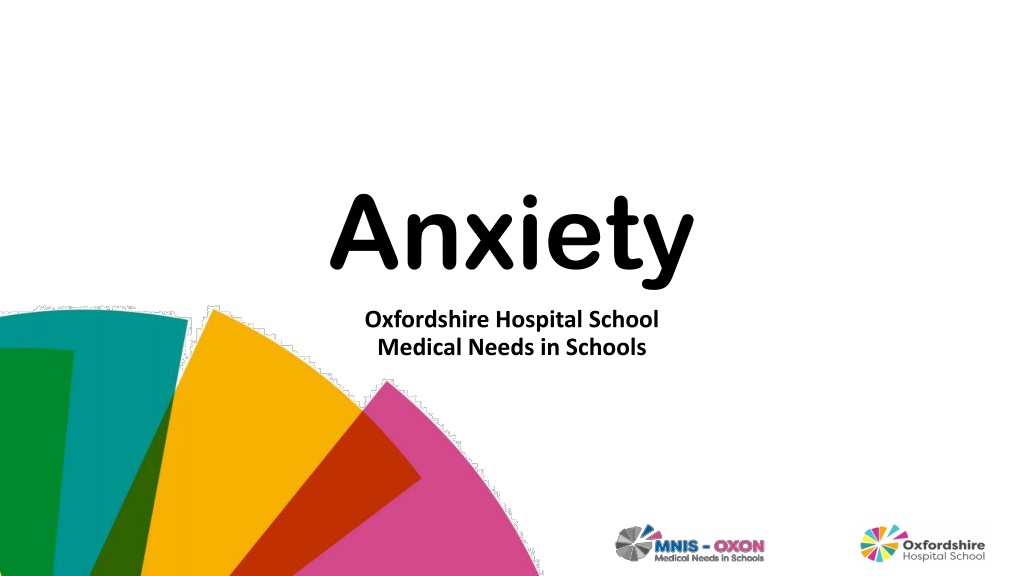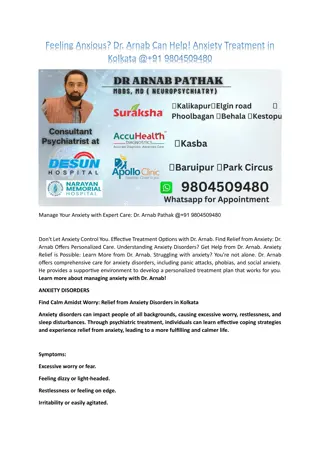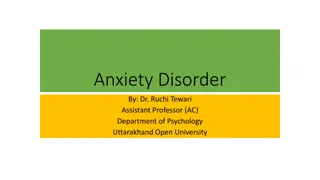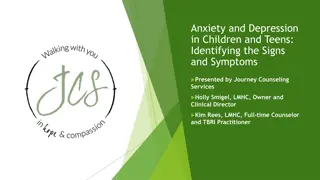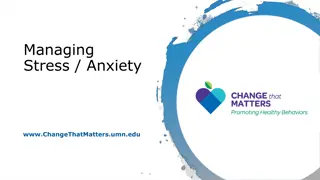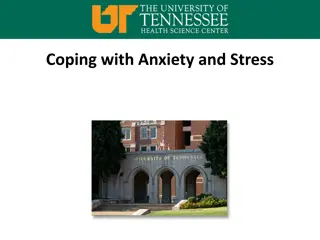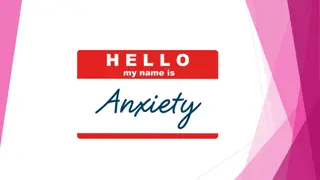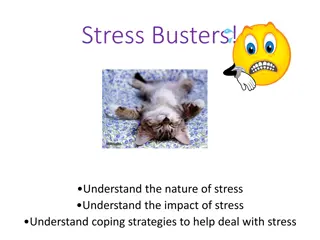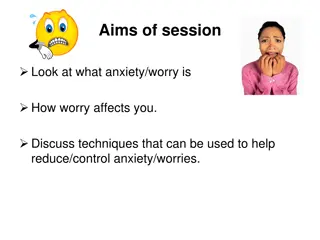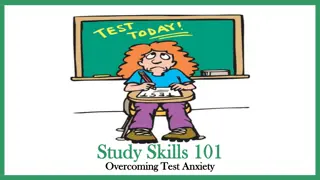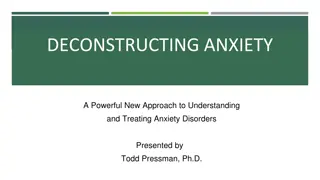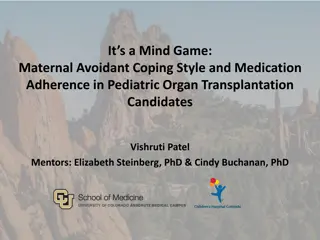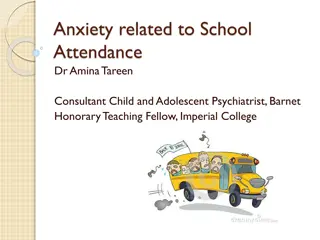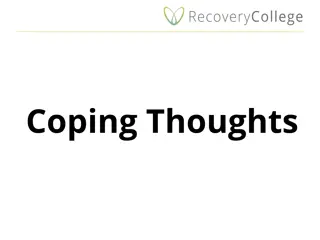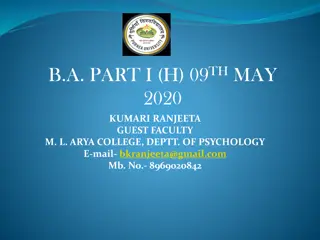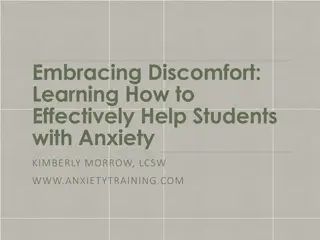Understanding Anxiety: Evolution, Science, and Coping Strategies
Explore the evolutionary basis of anxiety, recognize physical changes during anxious moments, brainstorm ways to reduce anxiety, understand the normalcy of anxiety, and learn when to seek help. Discover the impact of anxiety in and out of school, investigate physical changes in the body, debunk the myth around avoidance, and engage in group activities to manage anxiety effectively.
Download Presentation

Please find below an Image/Link to download the presentation.
The content on the website is provided AS IS for your information and personal use only. It may not be sold, licensed, or shared on other websites without obtaining consent from the author. Download presentation by click this link. If you encounter any issues during the download, it is possible that the publisher has removed the file from their server.
E N D
Presentation Transcript
Anxiety Oxfordshire Hospital School Medical Needs in Schools
Lesson Objectives: 1. To learn about the evolutionary basis/science of anxiety 2. To be able to recognise some of the physical changes in our bodies when we become anxious 3. To think together about ways to reduce our anxiety 4. To understand that feeling anxious is a normal part of human experience 5. To understand that if anxiety is making it too hard to cope with some things you can seek help and support
Question What about our own experiences of anxiety? What makes us anxious in and out of school?
What is Anxiety? Can we come up with some definitions? What does it feel like? How do you know you re anxious? Do you notice any changes in your emotions and your body?
Recap What have we learnt about anxiety and its origins? How can it be helpful? How can it be a problem? What physical changes are created in our bodies when we become anxious?
Physical changes Physical changes mentioned in the film clip: Pupils dilate, freezing , increased heart rate and blood pressure, breathing rate increases to take in more oxygen Release of stress hormones e.g. adrenalin to prepare for action and kill pain Blood diverted to the muscles from non-essential functions in the body.
Quickfire: Think back to the examples of what make us anxious from the start of the lesson What one piece of advice would you give to a friend who is feeling anxious about that particular thing?
Avoidance Why does Avoidance not really help? What do you understand a safety behaviour to be? What might starting small and working up look like?
Activity In groups, come up with 5 ideas for things that can help when you feel anxious
Activity In pairs or groups, consider the following scenarios and think about the advice you would give the individuals involved. Review together.
Reflection Think of one thing you have learnt about Anxiety from the session and think of one thing you can do as an individual to help yourself when you feel anxious.
Plenary Remember, Anxiety serves a positive function. Anxiety keeps us safe and gets stuff done. It is a normal part of life. It s only when Anxiety starts to get in the way of us being able to the things we want to do (or have to do) that it s more of a problem. Often when people are anxious they want to avoid the situation altogether to avoid feeling anxious, but usually this is unhelpful in the long term.
Plenary You can talk to someone in school or at home about things that are making you anxious You can do some things yourself to manage your anxiety e.g. don t avoid, directly address the problem, beware of over-compensating, knowing which calming activities work for you You can support your friends who are anxious or get support from them you might find you are worrying about the same things You can seek help from your GP if it feels too much
